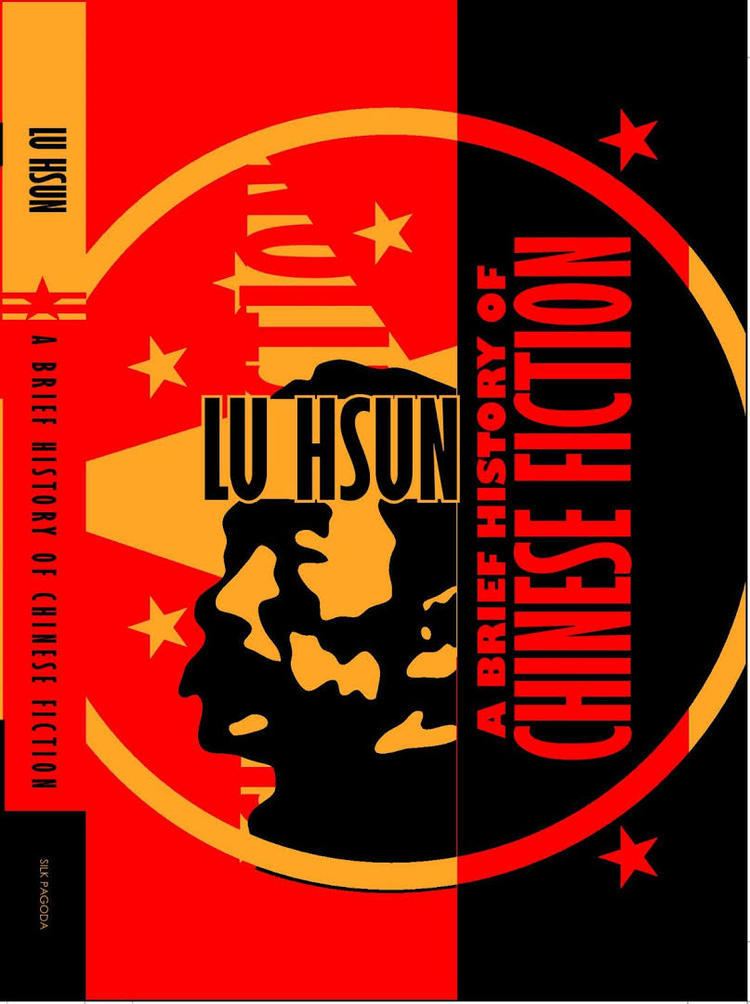7.6 /10 1 Votes7.6
Series China Knowledge Series Originally published 1996 | 3.8/5 Goodreads Subject Chinese fiction | |||||||||||||||||||||||||||||||||
 | ||||||||||||||||||||||||||||||||||
Original title 中國小說史略 Zhongguo xiaoshuo shilue Works by Lu Xun Dawn Blossoms Plucked a, The True Story of Ah Q, A Madman's Diary | ||||||||||||||||||||||||||||||||||
A Brief History of Chinese Fiction (Chinese: 中國小說史略; pinyin: Zhōngguó xiǎoshuō shǐlüè) is a book written by Lu Xun as a survey of traditional Chinese fiction. It was first published in Classical Chinese in 1930, then translated into Japanese, Korean, German, and then into English in 1959 by Gladys Yang and Yang Xianyi. It was the first survey of Chinese fiction to be published in China, and has been influential in shaping later scholarship.
Contents
The coverage extends from early myths and legends through the zhiguai stories of the Six Dynasties, the chuanqi stories of the Tang and Song dynasties, the vernacular stories of the following dynasties, and late Qing novels. The scholar John C. Y. Wang finds the study is still “significant and enduring” in providing a strong interpretive framework and detailed presentations of many previously neglected works, but also that it has obvious shortcomings, such as overemphasis on early forms of fiction, not enough coverage of later forms, such as the bianwen and vernacular short stories.
History
in 1920 Peking University invited Lu Xun to give a course on the history of Chinese literature. A draft version based on his lecture notes was issued in two parts in 1923 and 1924, then in a combined volume in 1925, which was reprinted five times. Lu Xun revised it for publication in 1930. The work was quickly translated into Japanese, then over the following decades into Japanese again, then into English, German, and Korean. WorldCat, the international catalog, lists 175 editions in Chinese and Japanese published from 1925 to 2012 and 54 editions in English from 1959 to 2014.
Evaluations
Robert Hegel, in a review of the study of Chinese fiction, notes that Lu Xu had "far less than the complete corpus of classical Chinese fiction" available to him, and there were many items to which he did not have access. The dominant genres of the Tang, the bianwen and pinghua, he continues, had only begun to be rediscovered and few readers understood their historical significance. Hegel concludes that While Lu Xun's critical insights into individual works remain useful, Brief History, "while still thought-provoking, is far from sufficient as an introduction to the field now, seventy years later."
John C.Y. Wang praises Brief History for being both “grand in design and minute in execution.” Discovery of new materials in later years meant there are gaps to be filled and conclusions to be revised, but “a bold outline had been drawn and a sound methodology established....” Before Brief History, there was little discussion of fiction in Chinese studies of literature; for extensive discussion of genres and works of fiction, one had to turn to foreign works such as Herbert Giles’s History of Chinese Literature or a survey in Japanese by Sionoya On Lu Xun’s approach balanced historical context, the work's audience, the work's author, and the work itself. The solid scholarship is all the more impressive because earlier neglect of the subject made it difficult to establish authorship, text, and dating. The Chinese version includes references to the primary and secondary sources, which are not included in the English translation.
Contributions to the field
Because of its persuasive interpretation and clear presentation, Brief History is still the starting point even for many scholars who do not agree with it.
For instance, Professor Gu Ming Dong writes that a “scholarly consensus” holds that Chinese fiction reached “full maturity” only in the Tang dynasty, for “Lu Xun’s view has been generally considered authoritative.” The argument in Brief History is that the pre-Tang stories were “unconsciously composed fictional works” (fei youyi zuo xiaoshuo) while the Tang chuanqi tales were “consciously composed fiction” (youyi wei xiaoshuo). Gu points out that Lu Xun's distinction grew from one made by Hu Yinglin, a literary theorist in the Qing dynasty, who stressed “authorial intention.” Professor Gu points out that authorial intention is difficult to establish and that authors may have tried to hide it. He goes on to take Lu Xun to task for underestimating pre-Tang writers who recognized the need for factuality but wanted to take advantage of their powers of fictitious creativity. The zhiguai tales of the Six Dynasties may have been scraps left over when the standard histories were written.
There has been disagreement on other points. Wilt Idema, for instance, was among the first to disagree with Lu Xun’s explanation that the huaben of the Song dynasty were "promptbooks," or at least printed versions of them, used by professional storytellers, (Brief History Ch 12-13) rather than stories which consciously adopt the conventions and rhetoric of storytellers in order to achieve certain effects.
Later scholars adopted Lu Xun's term shenmo xiaoshuo (神魔小说) in Brief History, which has three chapters on the genre. The literary historian Mei Chun translates Lu Xun's term as "supernatural/ fantastic." The Yangs translate it as "gods and demons literature." .
